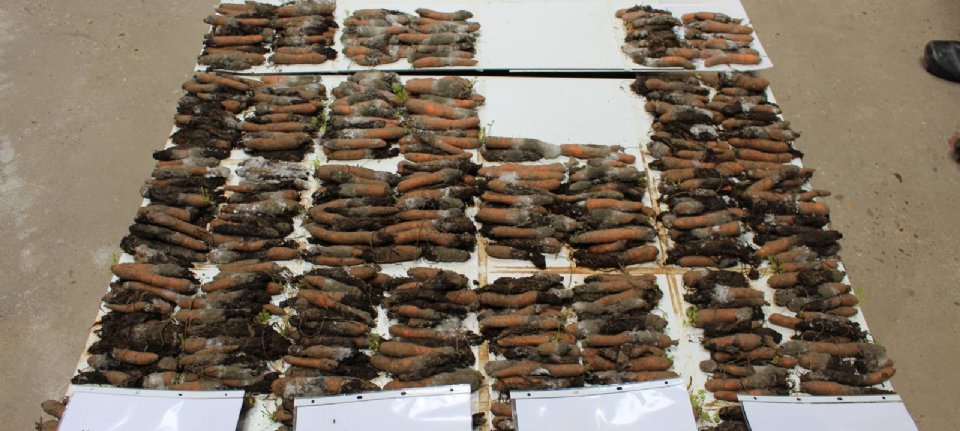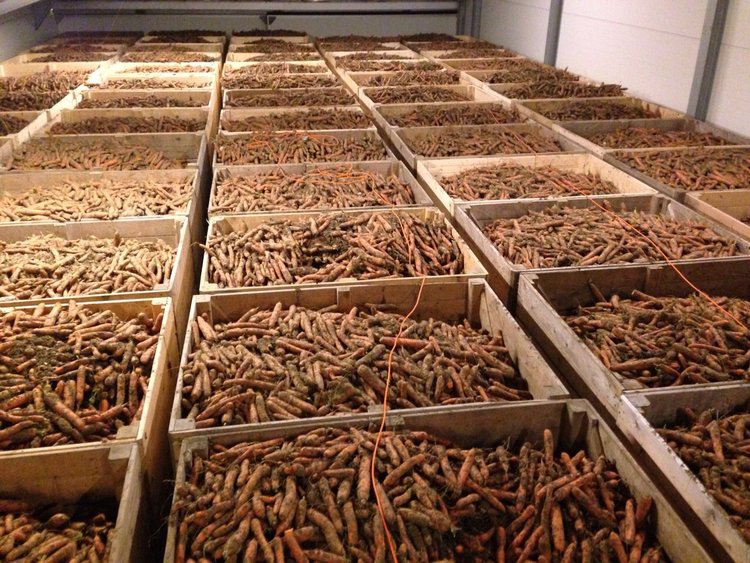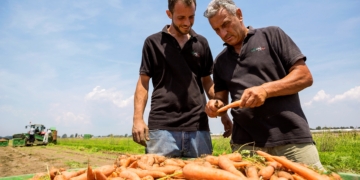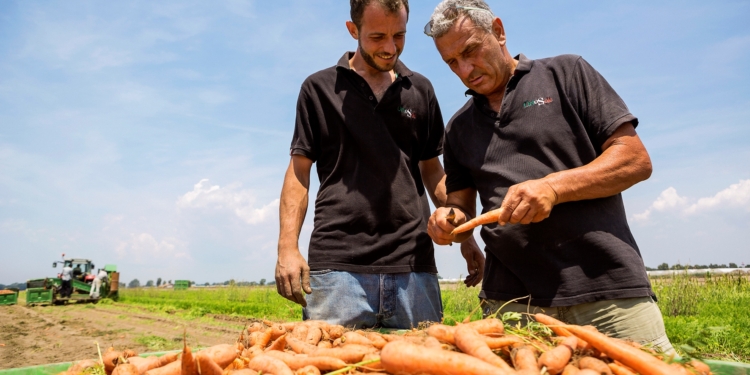After a long storage period, a fungicide test in carrot from the product manufacturer BASF shows that carrot growers have a choice to limit their storage losses. The trial was carried out in Flevoland last year.

BASF initially compared various fungicides, including its own products Signum, Scala and Dagonis SC. This was done in a flushing schedule and also in a number of schedules where the resources are alternated just as in practice. The fungicide test was carried out with the Nerac variety on practical plots in Dronten and Marknesse.
Technical specialist Kick van Saarloos explained the results of the trial this week. To support his story, he collected the sorted carrots with fungal infestations from the storage samples. The failure rate of the treated objects after five months of storage varied considerably depending on the treatment schedules and the disease pressure.
High mildew pressure
The BASF trial in Dronten was constructed in 2020 on a plot with a high mildew pressure. On the practice plot in Marknesse, the foliage was artificially infected with alternaria during the growing season. In both tests BASF compared, among other things, its own products with a standard fungicide.
Four fungicide sprayings were carried out in all treated objects. The control of the fungi started around the end of July. Subsequently, an interval of approximately two and a half weeks has been used in the schedule. The last spraying took place about mid-September.
The field trial shows that Signum and Dagonis SC as well as Signum in combination with Scala have an excellent effect on both mildew and alternaria. Van Saarloos shows on the basis of sheets that a mildew effect of 98 percent has been determined for Dagonis SC, for Signum sprayed with a wetting agent that is 95 percent.
Effect on alternaria
In the case of a heavy alternaria infection, the scheme with twice Signum with wetting agent followed by two times Scala with wetting agent to achieve an efficacy percentage of 80 percent. In this study by BASF, the standard fungicide remains at an effect of 64 percent.
‘The good effect on the fungi is also reflected in the hectare yields in the field,’ says Van Saarloos. ‘Compared to untreated, we calculate an additional yield of 22 percent for the objects with Signum and Scala and the objects with Dagonis SC and Scala. In this trial, this also meant that we could harvest 22 tons more carrots from one hectare. ‘
The recent analysis of the storage samples shows that after five months before the trial in Dronten, the percentage dropout varies from 9.8 percent to 22.7 percent. The carrots from the trial plot in Marknesse are stronger in storage. Here the best object scores a storage failure rate of 2.4 percent and for the poorly performing object, BASF records a failure rate of 6.3 percent.

Better than standard fungicide
Van Saarloos: ‘The best storage samples were treated with Signum and Scala. The objects with Dagonis SC have slightly more failure, but still perform much better than the standard fungicide. ‘ According to BASF’s carrot specialist, the moldy roots mainly contain botrytis and sclerotinia.
He concludes that products such as Signum and Scala in carrots give excellent control results. Furthermore, Van Saarloos sees Dagonis SC as a good alternative. ‘This fungicide has a broad effect on fungal diseases in many vegetable crops. An additional advantage is the relatively low amount of active substance that is sprayed per hectare. That makes the product attractive for, for example, cultivation according to the conditions of PlanetProof. ‘
In Brassicas, the main diseases are Alternaria, ring spot and Botrytis. Resistance is a real issue so growers are urged to use a number of fungicides with different modes of action. Signum (boscalid and pyraclostrobin) has a strong position in this sector (Brassicas and carrots in particular) because of its broad-spectrum activity and its distinct mode of action.
































